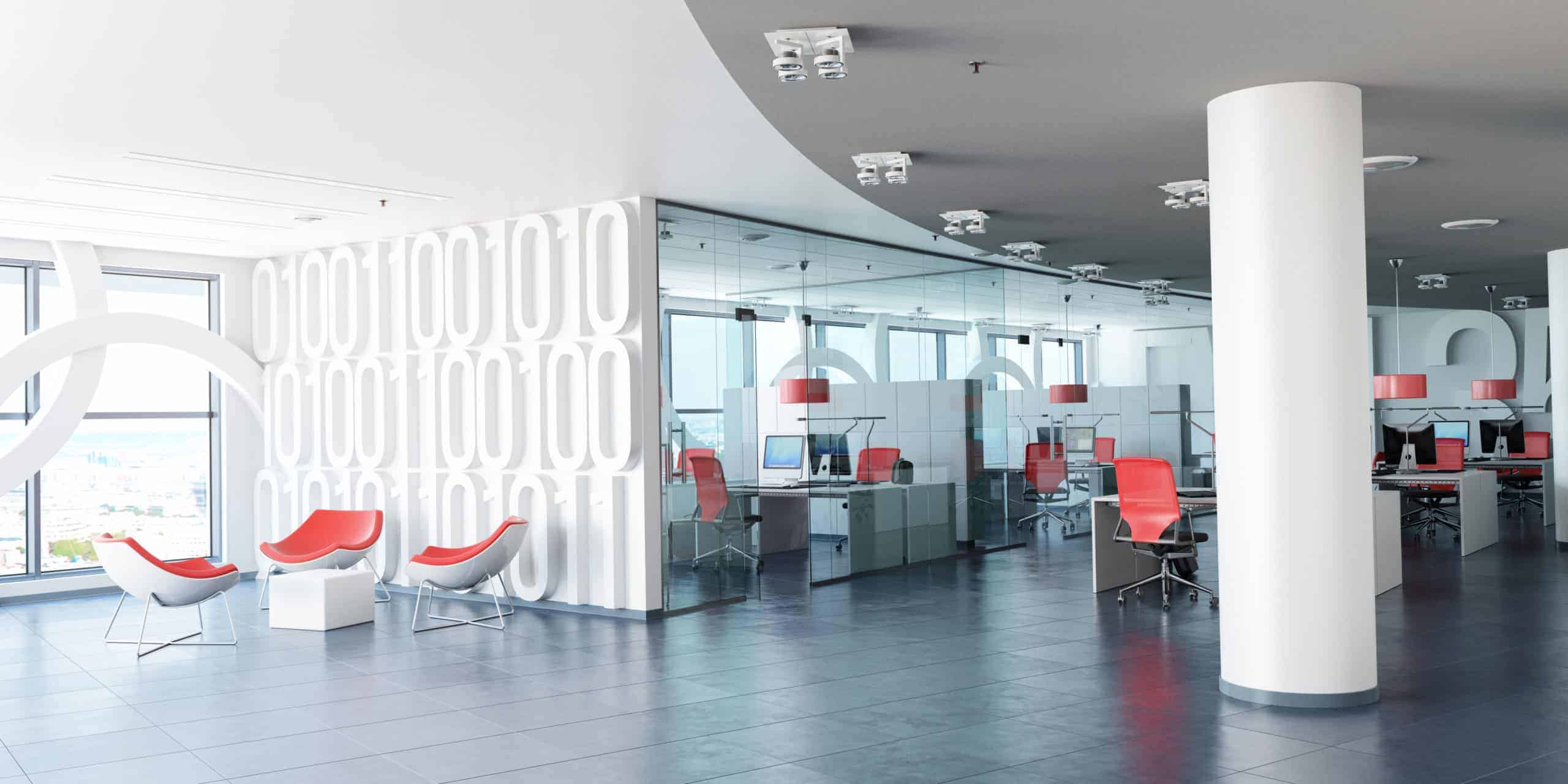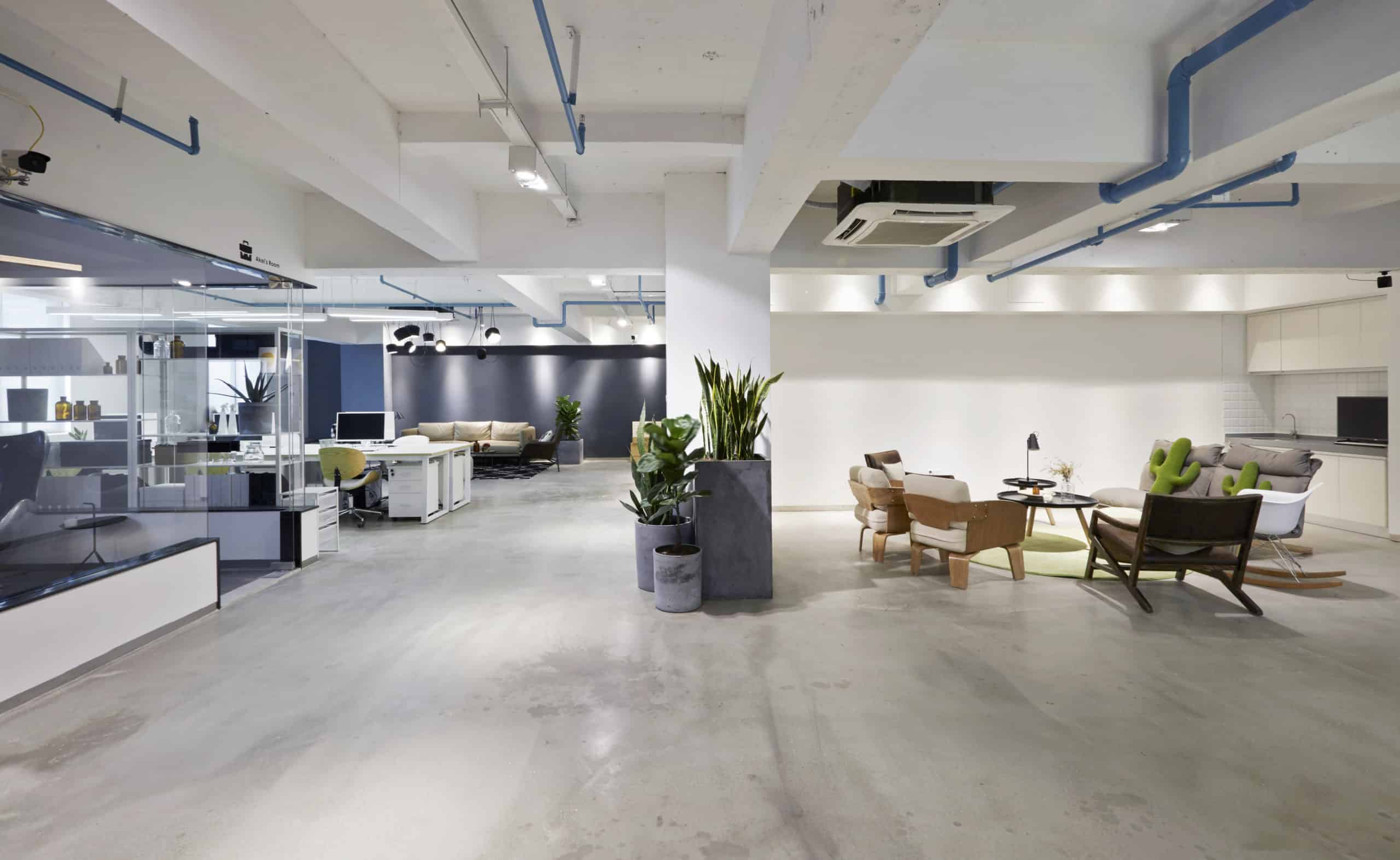
How Office Design Can Help Your Business Realize Its Core Values
Company culture has become a rising concern in business in the last decade, taking a place beside traditional issues like strategy and operations in workplace priorities. A recent survey by Deloitte found that 94% of executives and 88% of employees believed that “a distinct workplace culture is important to business success.”
It’s true. A clear vision of your core values is essential to promoting your brand, increasing productivity, and retaining top talent. And one important way of articulating that vision is through office design.

Often when we think of office design we think of the pragmatic—how many workstations do we need? Collaborative or private spaces? What is the best arrangement for IT integration? But the shape of our offices also shapes the way employees interact, and how they interact can define company culture.
Below are some things to consider when designing an office space that best expresses the core values of your company.
What Are Your Values?

Are you a nose-to-the-grindstone, no-nonsense outfit that gets things done?
Do you prioritize creativity and outside-the-box thinking?
Or are you more concerned with innovation and adaptability in a competitive marketplace?
In order to articulate your business culture in your office you have to articulate it in your boardroom. Defining that culture is partially about your outward branding, sure, but it’s also about the attitude you want your employees to bring to the workplace, and the attitude you want to foster there. The better you understand your business’ core values, the better you can design an office that expresses them.
How Office Design Can Influence Company Culture
Consider some of the questions we asked above. For each “yes” answer, there is an office design principle that can help reinforce that attitude in the daily workplace.
A company that champions drive and independence in its employees may prefer a multitude of private workspaces, such as cubicles or freestanding desks, that allow their staff to focus on high priority tasks and deliver results quickly.

A more creative and nimble culture, on the other hand, will benefit from a breadth of open and collaborative spaces, which encourage employees to communicate and brainstorm.
More commonly, your company culture will require a variety of different spaces, opening sight-lines to encourage communication, while also providing safe havens for more intensive tasks. A balanced approach to design is usually the most successful one.
In a well-curated office, staff and guests alike will know immediately upon entering what kind of company this is—what they expect of their employees and what kind of culture they hope to foster in them.
The Role of Aesthetics in Office Culture

When we think of office aesthetics, we often think about how they may advance a company’s brand. But it’s not simply outsiders we hope to make an impression on—it should be our own employees as well.
If your business values a strong work ethic and conformity, you’ll want to encourage that through an understated, consistent design, with a restrained and deliberate color scheme. If it’s creativity you want to emphasize, you can do that with an eclectic, evocative, and colorful sensibility. Or if you want to advance a forward-thinking mentality, you may be looking for a sleek and fashionable aesthetic.
Your employees’ surroundings should constantly reinforce the values you encourage in them, not merely through functionality, but through looks as well.
Agile Workspaces Are Crucial to Culture Identity
As with all aspects of office design, there is no one-size-fits-all solution. Your office culture should be uniquely tailored to your core values, and your office should be uniquely tailored to your culture.
We often throw around terms like “cubicle culture” or “creative culture”, and they can be helpful in understanding certain principles of design, but it’s rare that a given office would fully conform to such a monolithic concept. Few company leaders envision their office as a labyrinth of droll cubicles or as an anything-goes playground of unconventional workspaces.
Many businesses today find that designing with balance is the way to go. Your office design should include a combination of workspaces and aesthetic choices that correspond precisely to the culture you hope to foster. Some private workspaces here, some collaborative ones here, some open areas here, depending on how your business prioritizes these elements.

How to Align Workplace and Company Culture
It’s up to you to determine just what values you want to express in your office, but fortunately you have lots of help when it comes time to make that happen. An experienced furniture dealer can offer the resources and expertise to plan, design and outfit an office that meets your business’ cultural needs. Moreover, they can handle the practical aspects—like installation and IT integration—that can become nagging obstacles to an ideal workplace design.
You’ve already done the hard work of establishing an ideal vision or your company culture, let your furniture dealer do the work of making it a reality.



